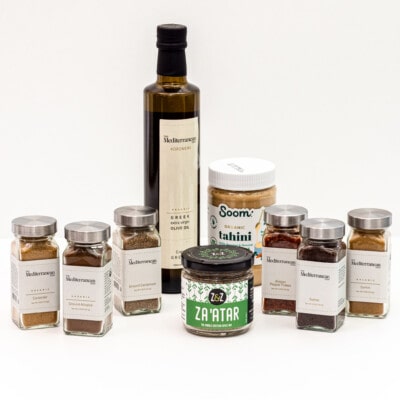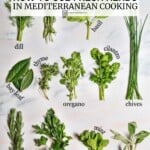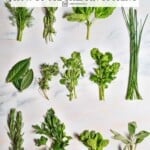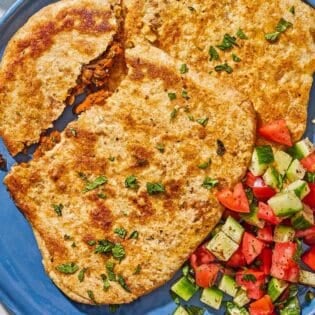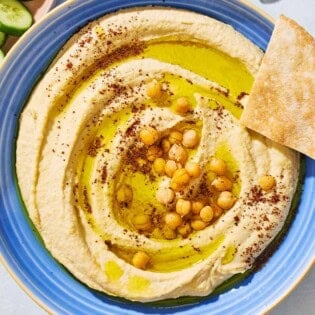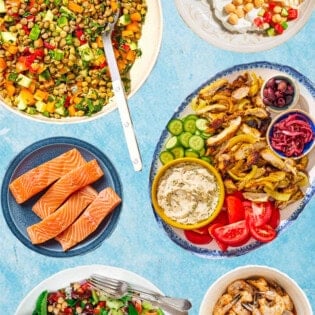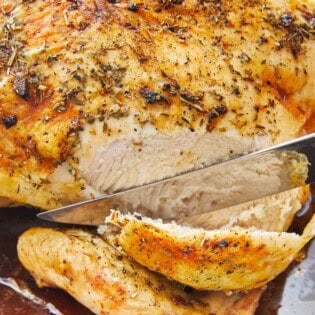Never a mere garnish, fresh herbs are a key ingredient in Mediterranean recipes, providing vibrant flavors, aroma, essential nutrients, and a pop of color everywhere they go. Learn all about cooking with fresh herbs, the 12 most common types of herbs, and how to use them like a pro with this simple guide.
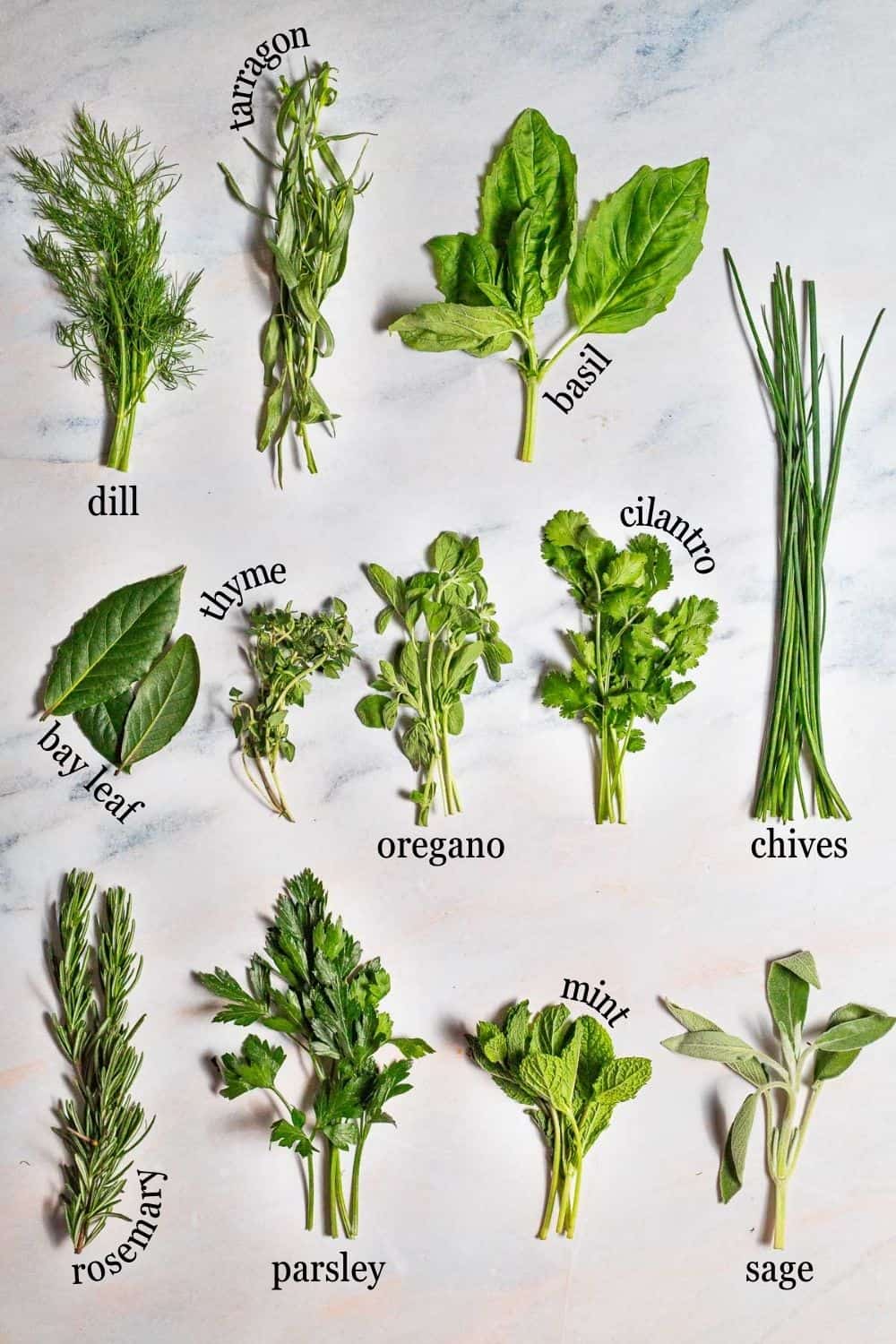
In Mediterranean kitchens, fresh herbs are as essential as salt. We use them with abandon like our secret weapon, transforming a handful of humble ingredients into a crave-worthy meal at breakfast, lunch, dinner, and everything in between.
They are often a key ingredient, and I can’t imagine the crispy Falafel of my childhood without 2 cups of freshly chopped cilantro, parsley, and dill. Or Tabouli Salad without 2 whole bunches of parsley—the subtle crunch of tender stems casually mixed in, adding so much nuance. Other times a final sprinkle makes all the difference, adding a burst of color and a refreshing note to lift the savory flavor.
As a bonus, the big bold flavor from just a sprinkle of fresh herbs means you don’t need extra fat or sugar, naturally creating healthier, more balanced dishes. Incorporate more fresh herbs into your cooking, and your body will thank you!
Table of Contents
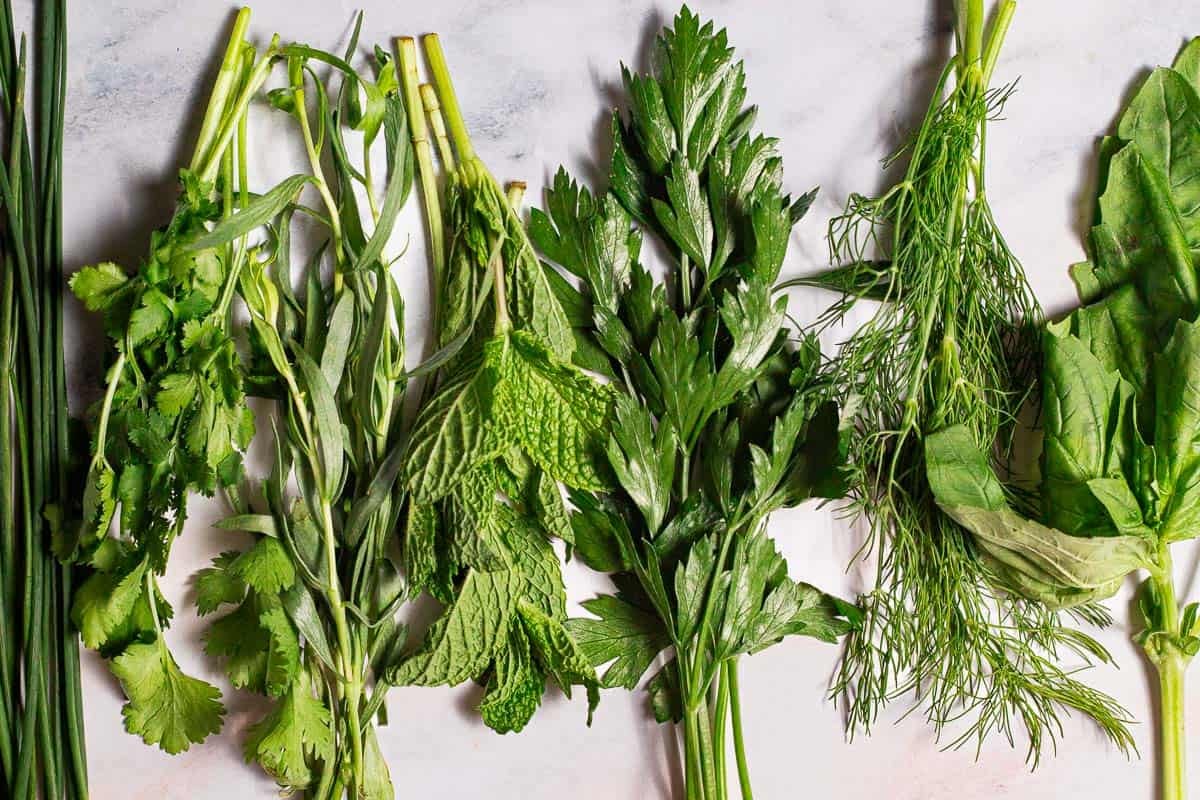
Tender Herbs
Herbs are usually grouped into two categories: “Tender” and “Woody.” Tender herbs have soft, fragile leaves and stems, so they’re usually added toward the end of cooking to preserve their bright flavors and vibrant colors. (Though, like with most things this is not a hard-and-fast rule, like with the famous Persian Beef Stew Ghormeh Sabzi, which fries and stews them in oil to make its signature flavor.)
I use tender herbs most often, and try to keep them well-stocked. You don’t need a fresh herb garden, just be sure to store them correctly so they keep in your fridge for up to 2 weeks.
- READ MORE: Guide to storing fresh herbs.
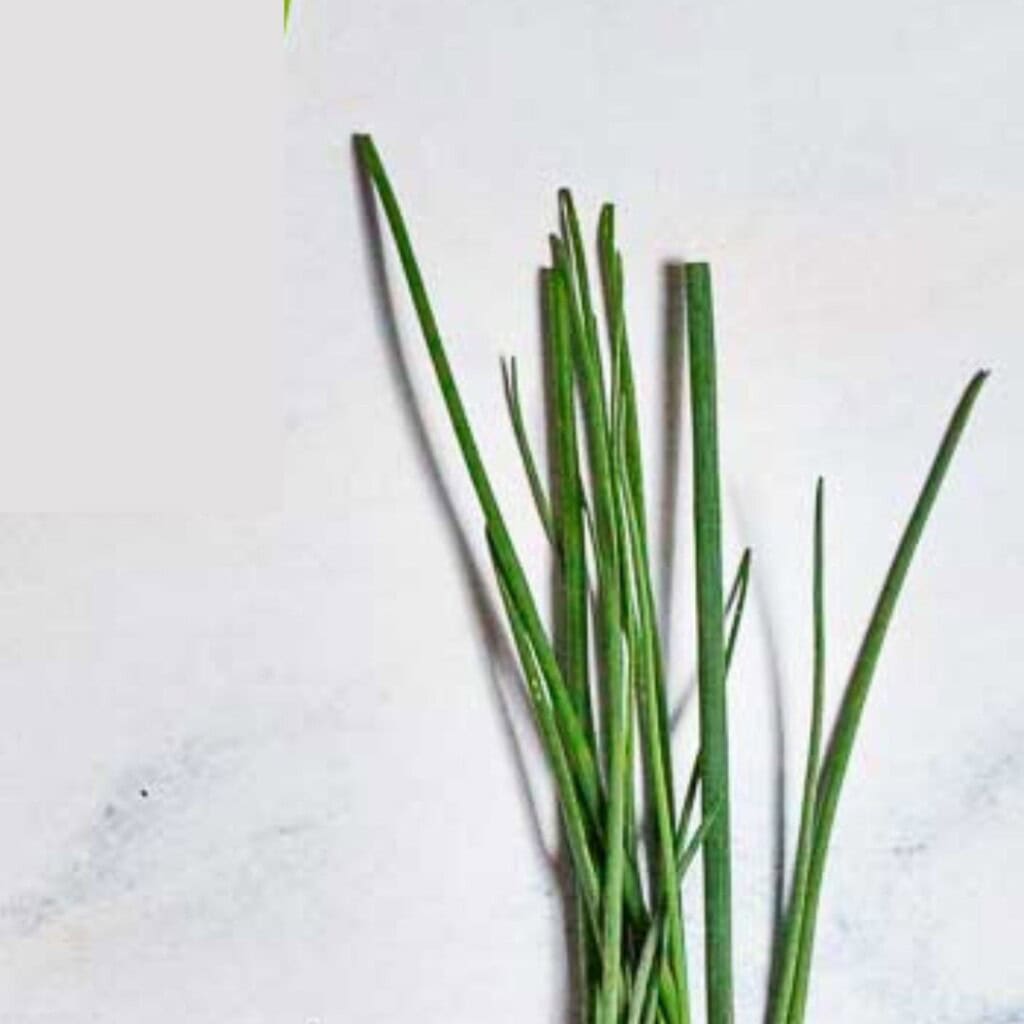
Chives
These tubular, grass-like herbs have long, thin stems, and are bright green. You’ll find them in grocery stores already trimmed without a bulb or flower attached. However, if grown at home, they’ll eventually produce vibrant purple flowers.
Best substitute: Green onion/scallion, shallot.
How to use fresh chives: They add a delicate, onion flavor without overpowering the dish, and a slightly crunchy texture. Add chives toward the end of cooking to savory soups, salads, and dips. As a member of the allium family, chives provide a subtle garlicky taste, making them the perfect pairing for Garlic Mashed Potatoes, Soft Scrambled Eggs, Deviled Eggs, Roasted Beets, and Mediterranean salads with spring produce.
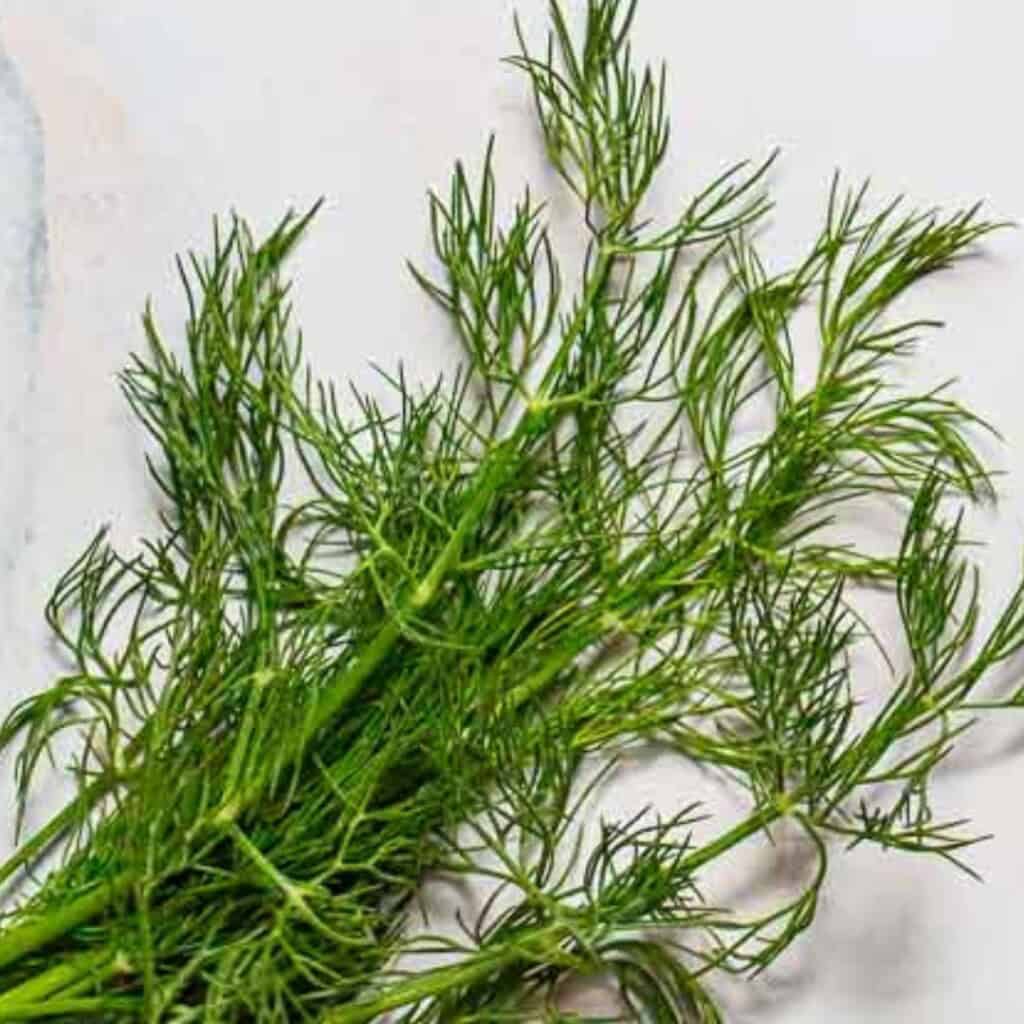
Dill
Dill is a soft, feathery herb that grows on long, tender stems. Recipe writers sometimes refer to it as “dill weed,” which usually refers to just the tender feathery tops, not the thicker stems.
Best substitute: Parsley, cilantro.
How to use fresh dill: Another Mediterranean native, dill regularly shows up in Mediterranean Diet Recipes. Its bright and refreshing flavor makes it a particularly popular addition to Creamy Cucumber Salad and Tzatziki Sauce. Dill’s almost lemony taste complements baked halibut, grilled chicken, and roasted meats. You’ll find that fresh dill is a key ingredient in homemade pickles, likely due to its sharp, tangy bite.
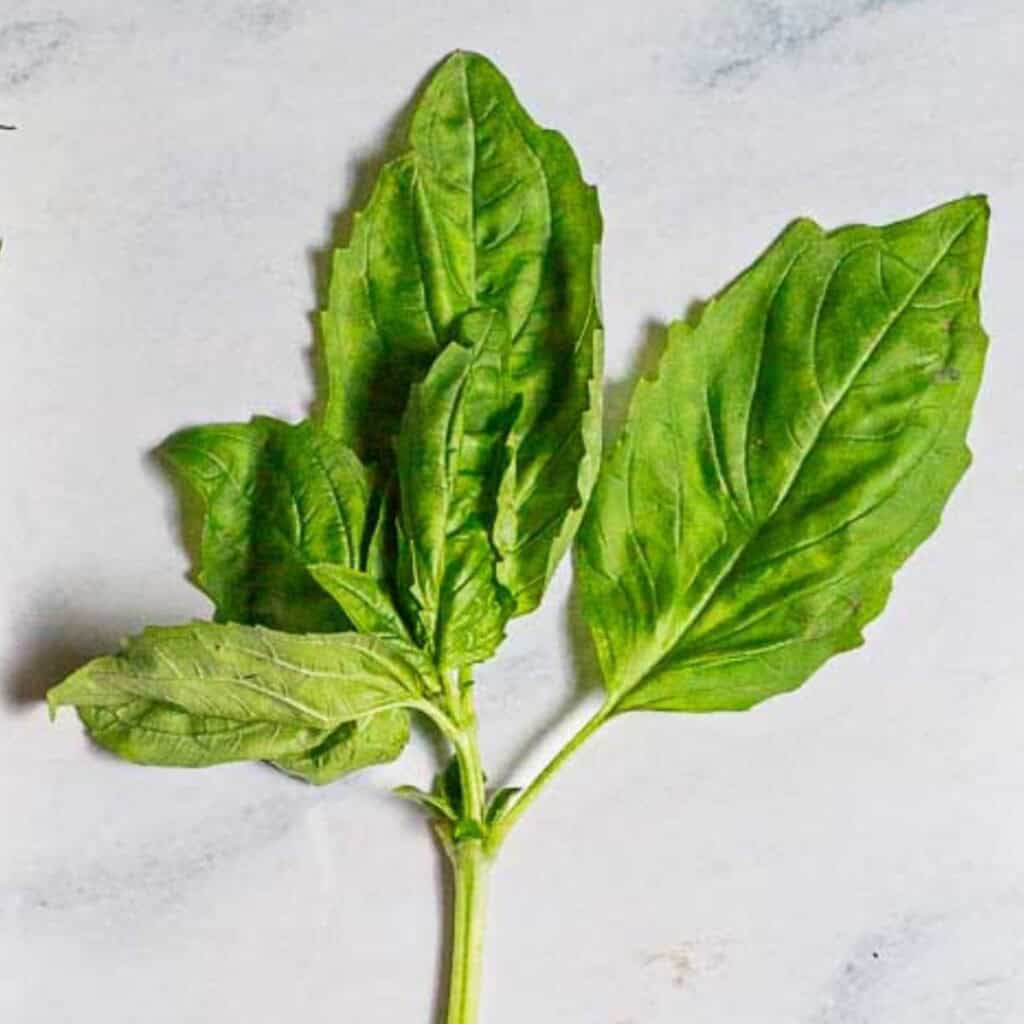
Genovese Basil
The basil you’ll find at most grocery stores is either Genovese basil or sweet basil, which is slightly milder and sweeter (not to be confused with some of its cousins, like opal basil or Thai basil). Both varieties are bright green and aromatic, with smooth and glossy leaves.
Best substitute: Tarragon or parsley work OK in a pinch (although there really isn’t a great substitute.
How to use fresh basil: With its fresh, lively, and lightly sweet flavor, green basil is often found in classic summer recipes, like Caprese Salad, Bruschetta, Basil Pesto, and more. These are all great examples of where the dried version just won’t cut it!
Unlike hardy herbs that can simmer all day, basil should be added at the end of cooking time or used in cold recipes like salads, sandwiches, salad dressings like my favorite Basil Vinaigrette), and cocktails. You can even use it to add an aromatic, herbaceous quality to dessert, like my Sicilian Strawberry Pudding (Gelo Di Fragole).
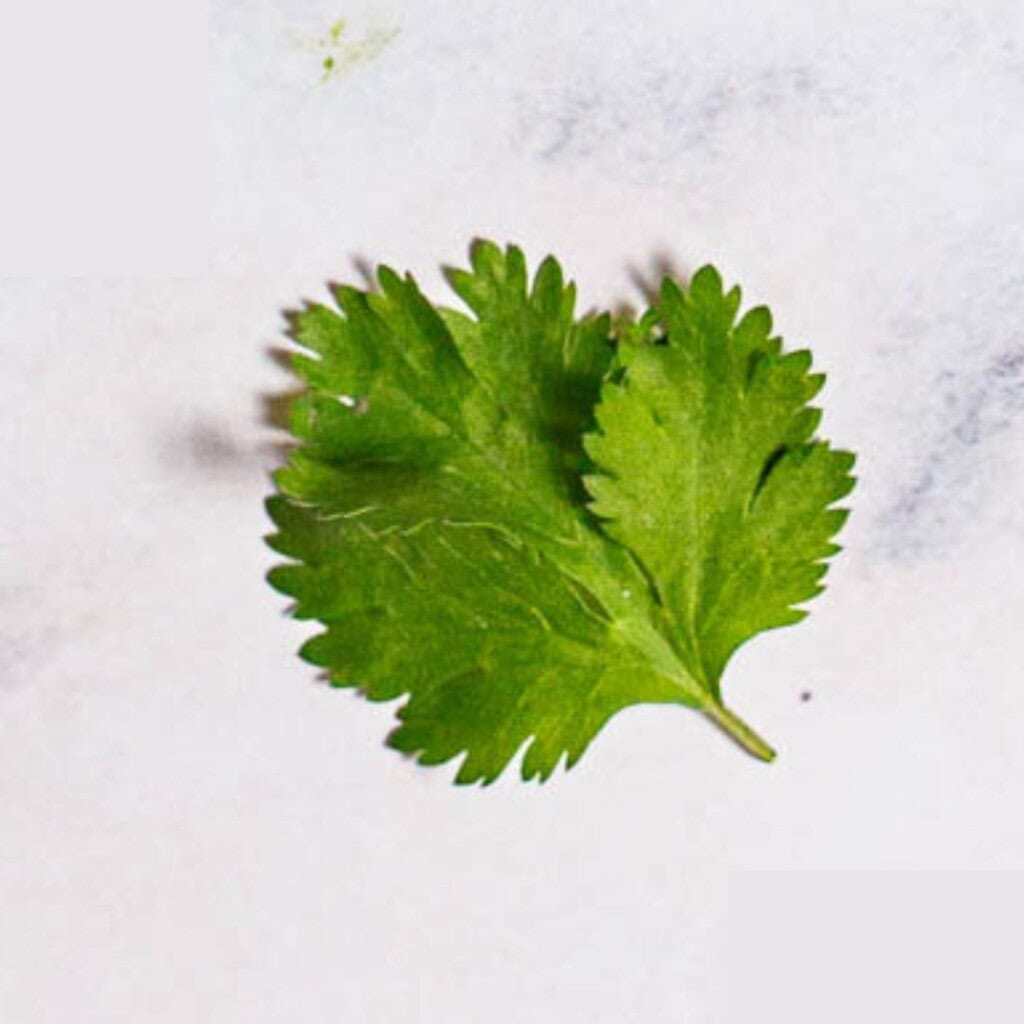
Cilantro
Cilantro is similar in appearance to flat-leaf parsley but with a more tender stem and short, feathery leaves.
Best substitute: Parsley.
How to use fresh cilantro: Whether you love it or hate it, you can’t argue with the fact that cilantro has loud, bold flavor. With its lemony quality, you’ll typically find it paired with citrus, like in this Easy Cilantro Lime Chicken recipe.
It lends itself well to chicken, white fish, and rice. While typically found in Mexican and Thai cuisine, it’s also popular in North Africa and the Middle East. Cilantro lifts the flavor of salads and vinaigrettes, making it a key ingredient in dishes like this Kidney Bean Salad with Cilantro and Dijon Vinaigrette.
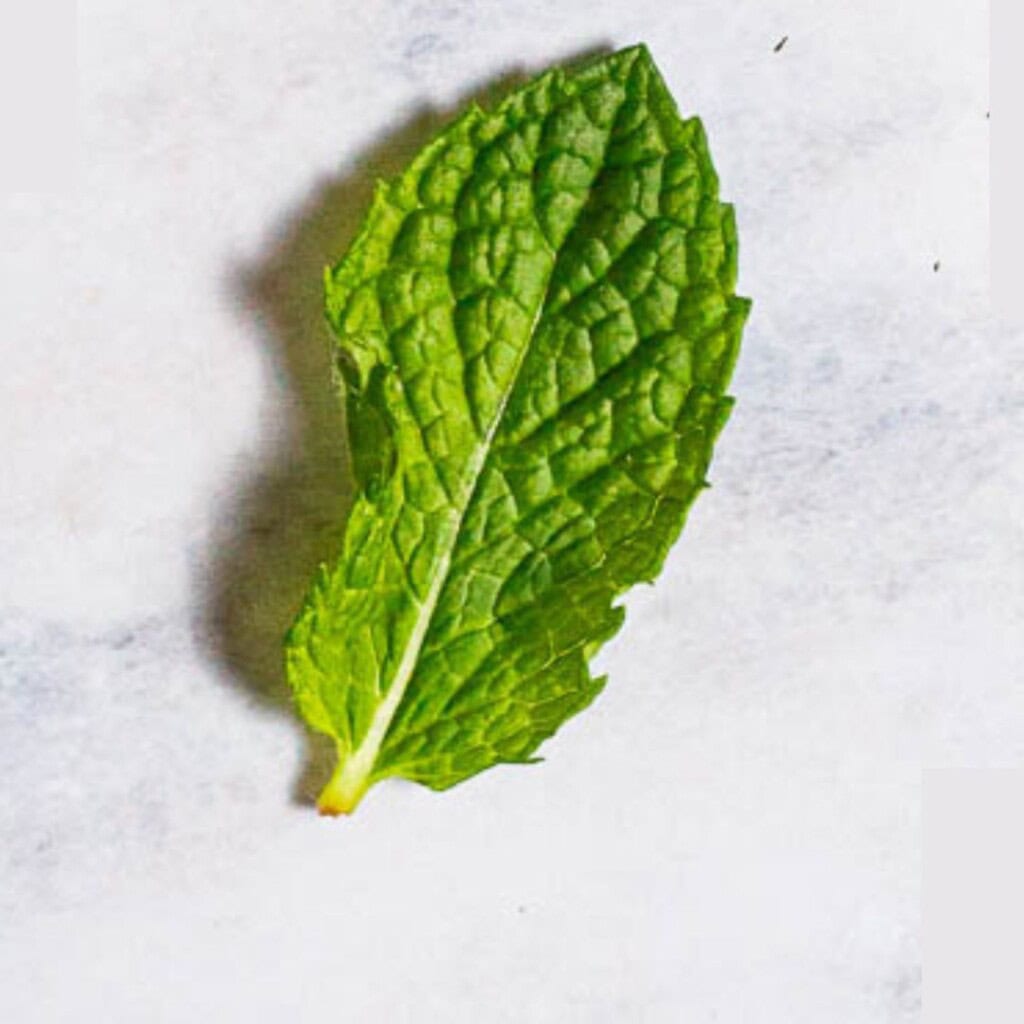
Mint
Fresh mint has medium-sized, broad, oval-shaped leaves with jagged edges and a textured finish.
Best substitute: This depends on what you’re making. For savory foods, use parsley. For garnishing desserts, use basil. If you’re blending into a smoothie, you can experiment with cilantro but it will have a significantly more savory vibe.
How to use fresh mint: Commonly known for its medicinal properties, fresh mint not only soothes the stomach but also has a wide range of culinary uses. You’ll find it in sweet desserts, fruit salads, savory dishes, cocktails, and smoothies, like this Green Smoothie with Mint. Peppermint works particularly well in desserts, especially when paired with chocolate, thanks to its sharp, more intense minty flavor.
Spearmint’s more subtle taste complements a wider range of savory foods, such as lamb, pork, and yogurt, and is widely used in Mediterranean and Middle Eastern cuisine. Additionally, mint’s refreshing and cooling effect makes it a welcome addition to warm-weather meals, like this chilled Watercress Soup with Peas and Mint.
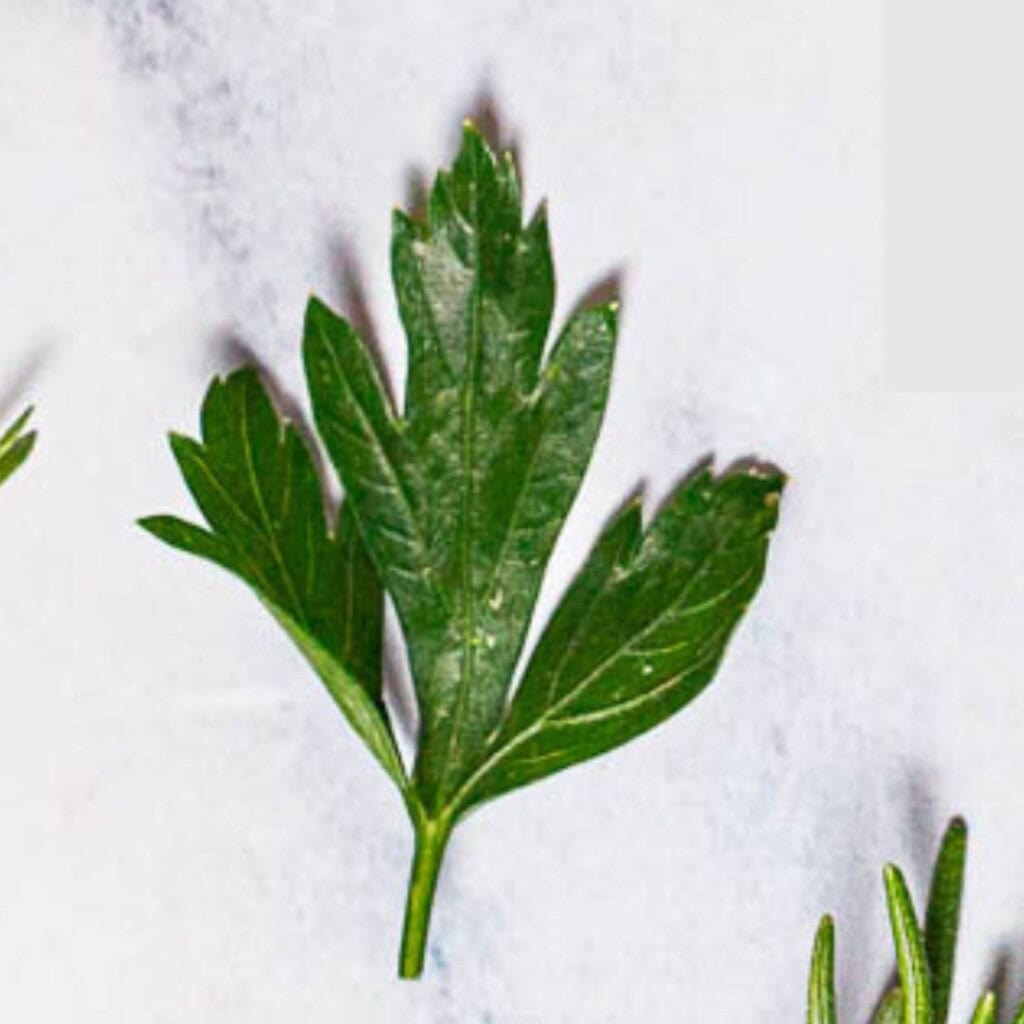
Parsley
Curly parsley has tightly curled, frilly leaves attached to long, thin, green stems. Italian (flat-leaf) parsley looks similar to cilantro, with wide, flat, leaves. The two most common varieties of parsley, flat-leaf, and curly parsley, can be used interchangeably, but I prefer flat-leaf parsley as it tends to be sweeter and less bitter than curly.
Best substitute: Cilantro–but don’t come for me! If that strikes a nerve, try mint or dill.
How to use fresh parsley: Parsley’s fresh, grassy, and slightly peppery flavor makes it incredibly versatile and one of the most popular herbs used in the United States, Italy, Europe, and the Middle East. It doesn’t pack quite the punch of cilantro or dill, but it does bring a level of brightness to a dish that many other herbs can’t match, like in this Salmon Salad with Fresh Vegetables, Parsley, and Capers.
Toss parsley into a leafy green salad, mix it into ground meat dishes, and toss a big handful into soups, like this Mediterranean White Bean Soup With Spinach And Fresh Herbs.
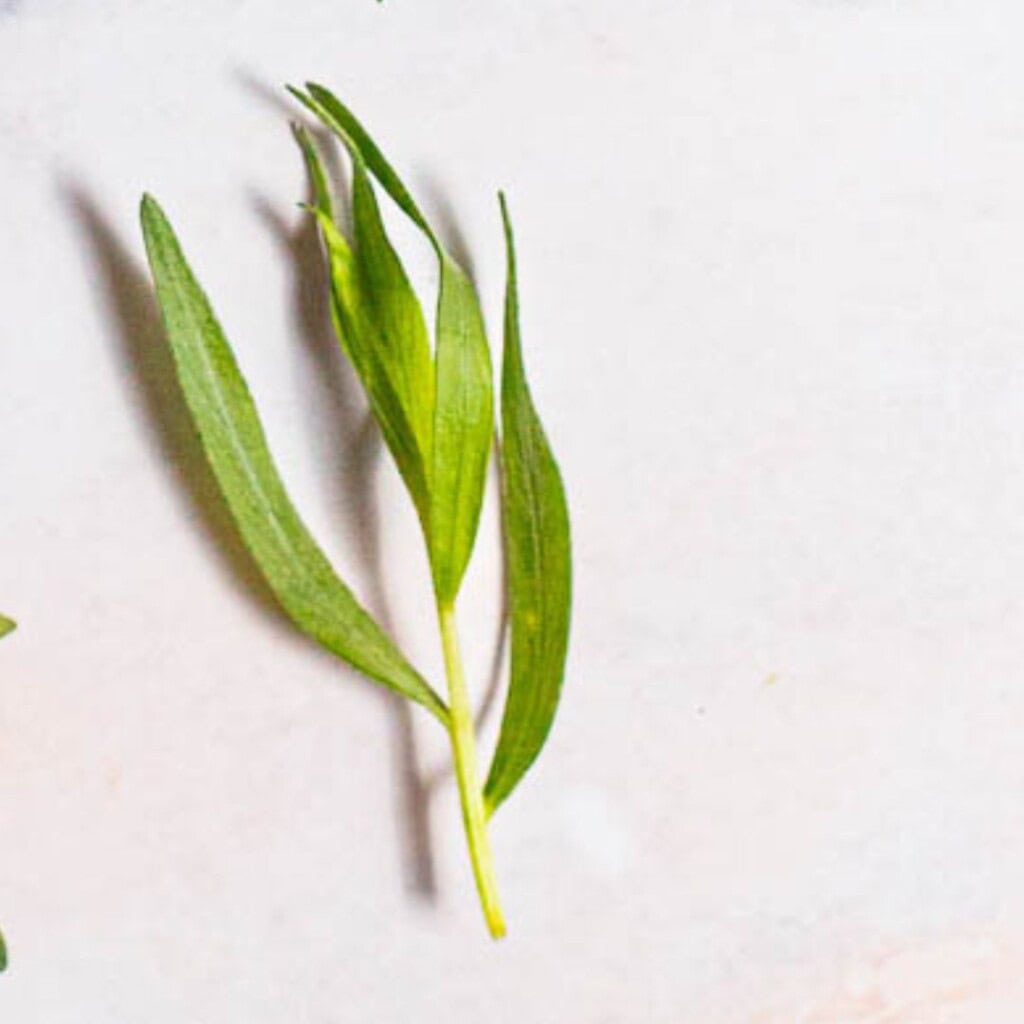
Tarragon
Tarragon is a tender herb with slender, elongated leaves that are smooth and glossy, similar to sage but a bit thinner and longer.
Best substitute: Fennel fronds, sage.
It has a distinct licorice-like flavor with a slightly sweet and peppery undertone. It’s most commonly used in French cuisine, perhaps most famously in Béarnaise sauce, but I also love to sneak it into lighter dishes like Grilled Zucchini Salad and Wilted Spinach Salad.
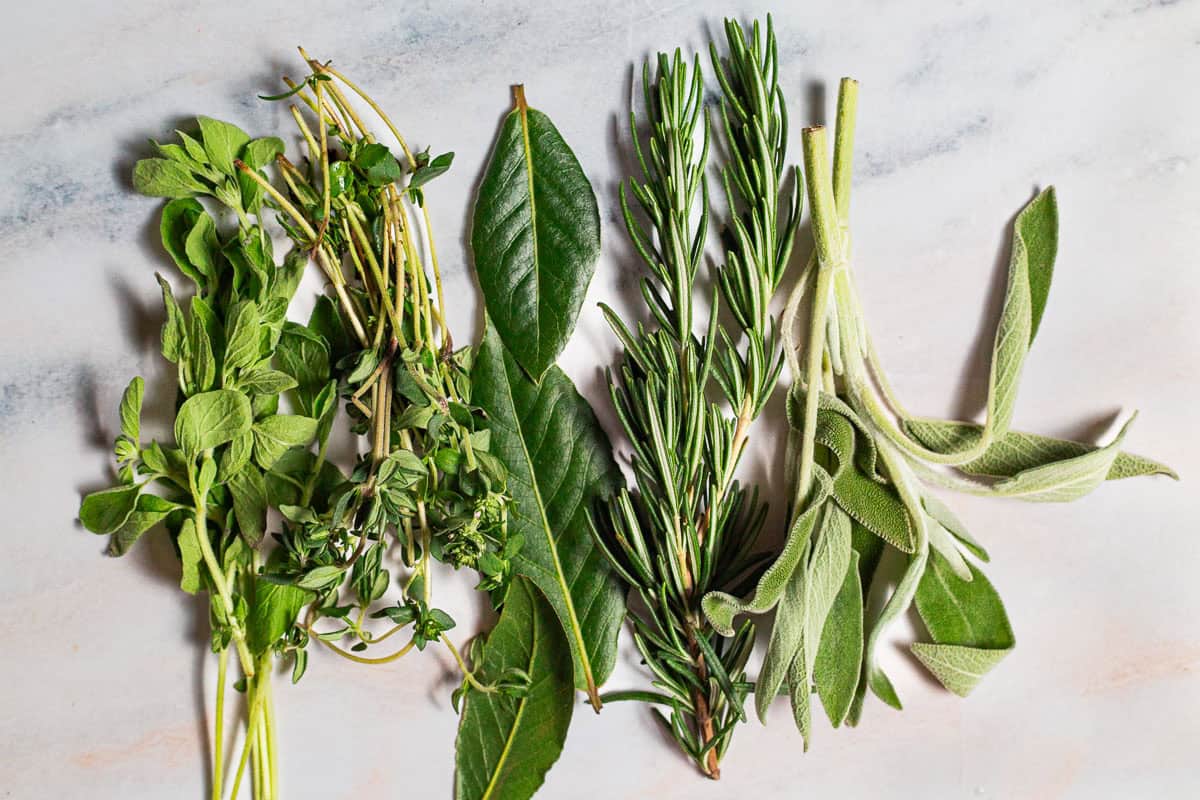
Woody Herbs
Woody herbs have sturdy, hearty stems that often carry tons of aromatic goodness that can withstand longer cook times. And while the leaves get to stay on the platter, just be sure to fish out the stems before serving.
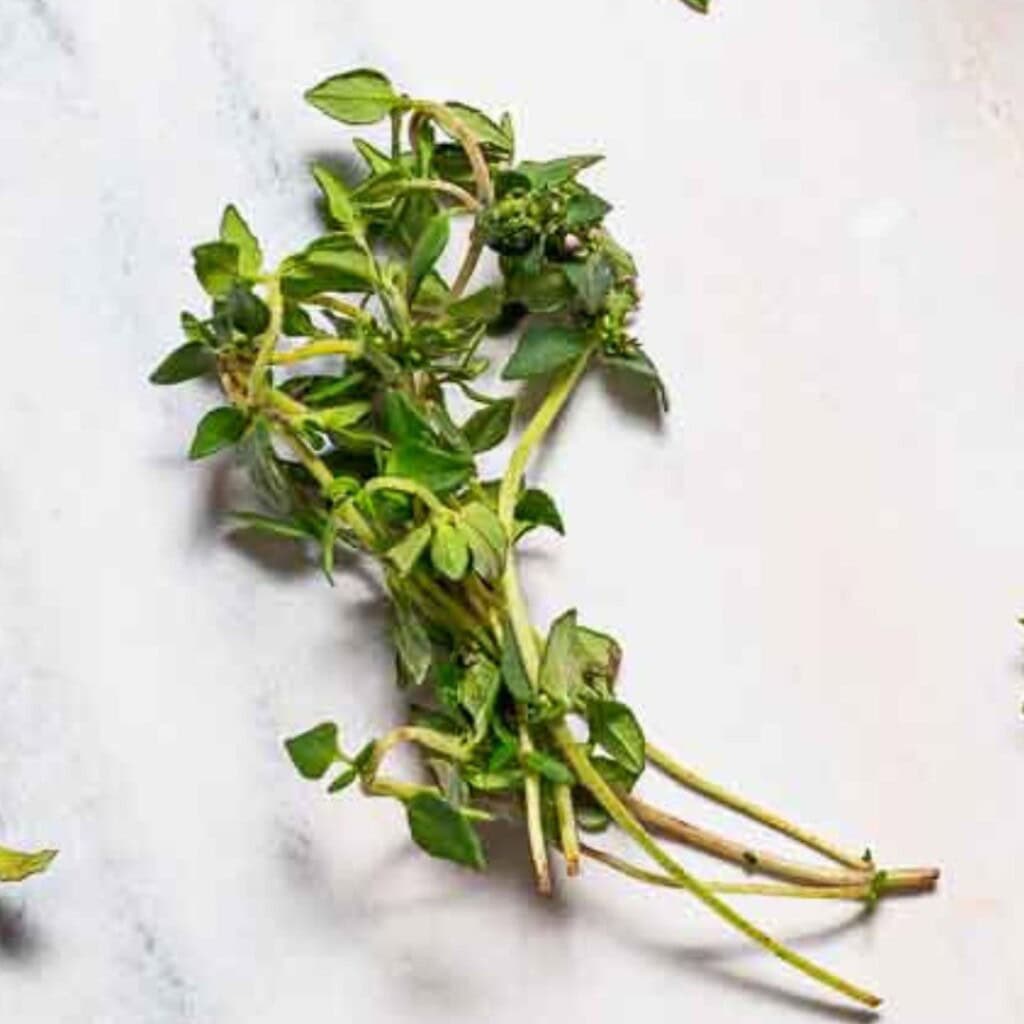
Thyme
Thyme has a tough, woody stem with tiny, narrow leaves.
Best substitute: Oregano, rosemary.
How to use fresh thyme: This versatile herb has a robust, earthy flavor that pairs exceptionally well with meaty main dishes, roasted vegetables, and hearty stews, like chicken and vegetable stew and Greek Pan Seared Lamb Chops.
Just like fresh rosemary, entire sprigs of fresh thyme can be stuffed inside a chicken or whole fish, tossed with vegetables, or slowly simmered into soups. Add fresh thyme at the start of your recipe to infuse your dish with flavor.
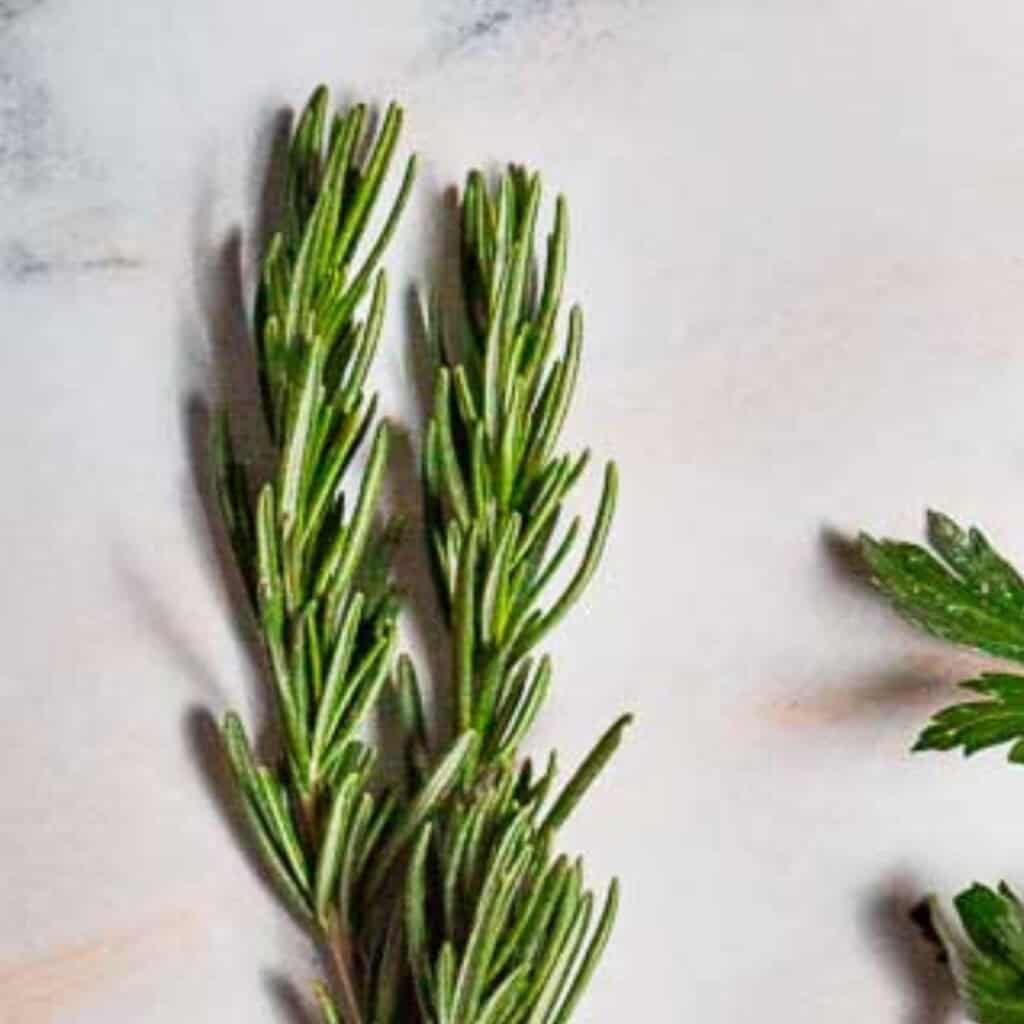
Rosemary
Rosemary sprigs have thick, tough, woody stems, and soft, pine needle-like leaves. Look for supple, bright green leaves with no signs of blackening.
Best Substitute: Thyme, Oregano
How to use fresh rosemary: Rosemary is native to the Mediterranean region and has a long history with Mediterranean cuisine. With its robust pine-like flavor and fragrant woodsy aroma, it’s one of the most aromatic herbs, and the most potent. Rosemary loves grilled and roasted meats, including chicken, lamb, and even fish. You’ll find entire sprigs of rosemary mixed into soups and stews, or tossed with roasted vegetables.
Gently pinch the leaves from the stem and add them to savory baked goods, like Rosemary Focaccia. Or, make a rosemary-infused olive oil marinade for Lemon Rosemary Chicken.
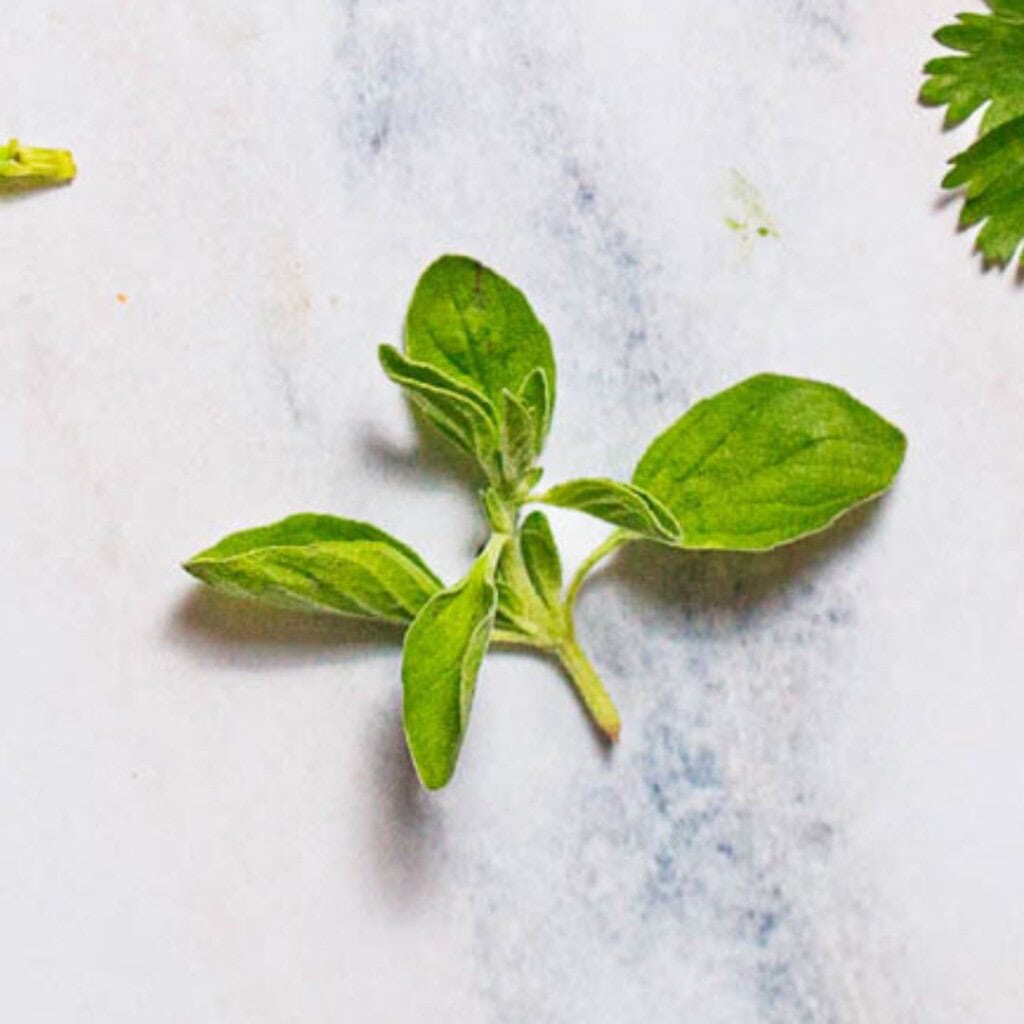
Oregano
Oregano consists of small, oval-shaped green leaves attached to long, thin stems. It is not to be confused with marjoram, though. While they may look very similar, marjoram is milder in flavor.
Best Substitute: Marjoram or thyme for cooking, sage for garnishing.
How to use fresh oregano: Widely used in Mediterranean cuisine, fresh oregano is a versatile herb with a robust, slightly peppery flavor. Use fresh oregano to infuse marinades with bold flavor, mix it into sauces, or add it to roasted meats and vegetables. The leaves are quite tender, so you can use them fresh in salads as you would sage.
It holds up well to heat, so it’s a great flavor-booster. Add whole sprigs to your Spaghetti Sauce, Chicken Stock, or Tomato Basil Soup, then fish them out just before serving.
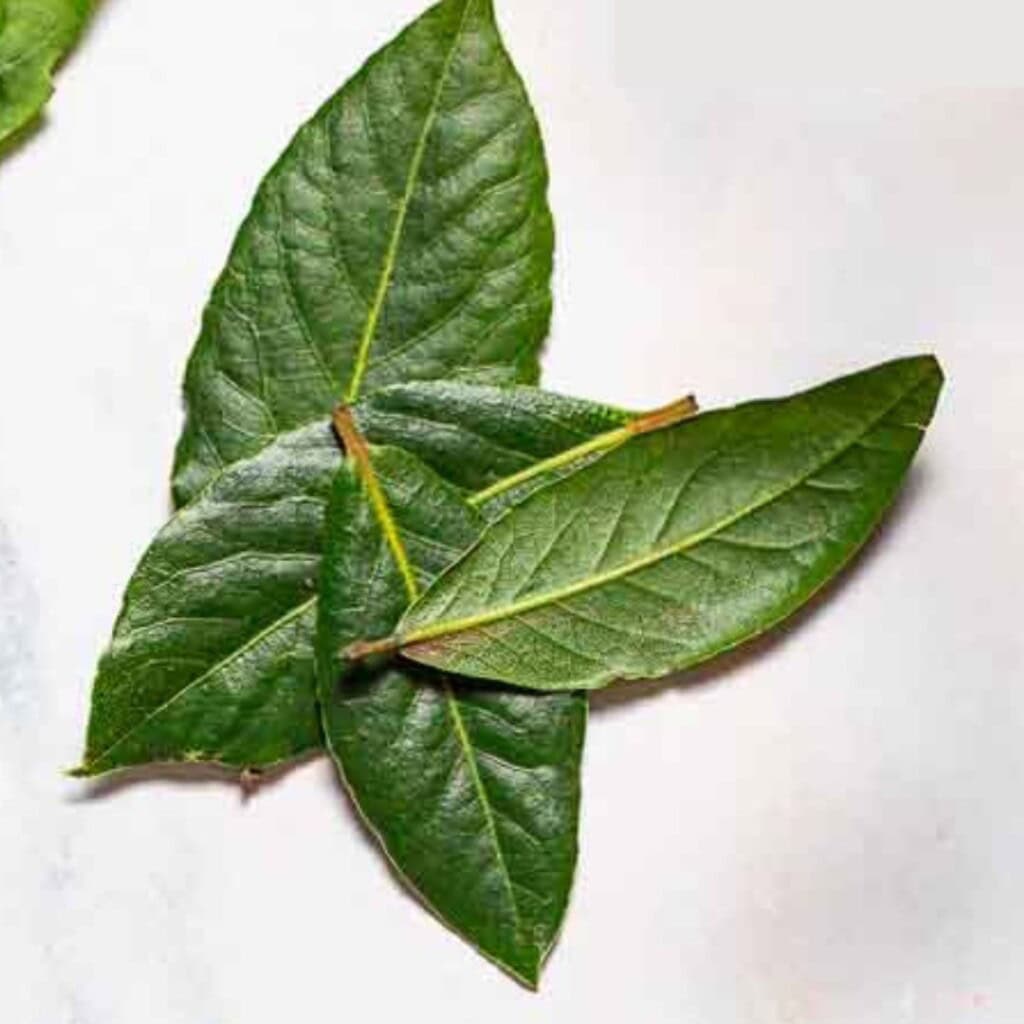
Bay Leaves
Fresh bay leaves are bright green, shiny, and oval-shaped with pointy ends.
Best substitute: Dried bay leaf.
How to use fresh bay leaves: While dried bay leaves are much more common, fresh bay leaves also deserve a spot at the table. They’re sturdy enough to stand up to an all-day simmer in a big pot of sauce, imparting a subtle herbaceous flavor into soups, stews, sauces, and stocks.
All you need is a single leaf to deepen the flavor of Beef Stew or Bolognese Sauce. Simply remove the bay leaf right before serving!
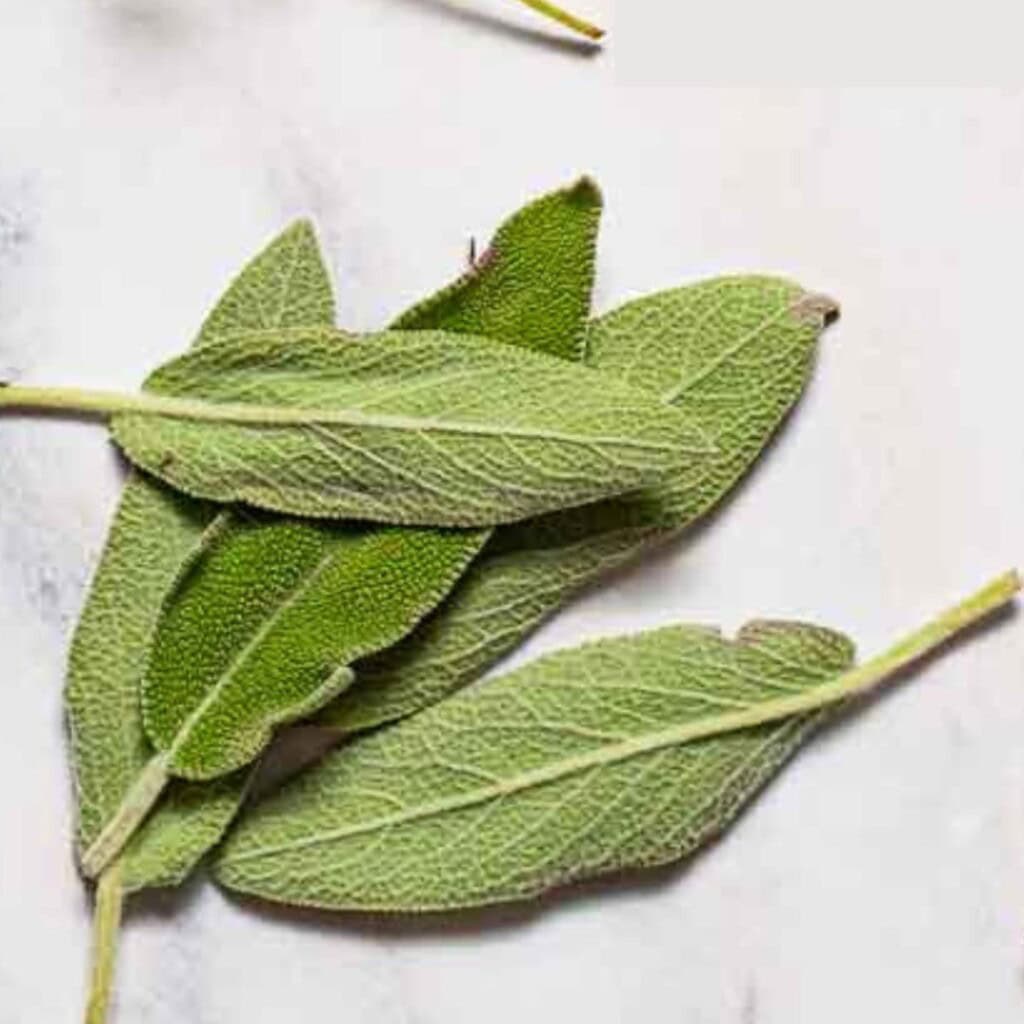
Sage
Fresh sage leaves are long and oval-shaped, and attached to short, thin stems. They’re dull green in color and have a slightly fuzzy texture.
Best substitute: Marjoram.
How to use fresh sage: You’re not doing yourself any favors if you limit fresh sage to holiday dinners! This woodsy, earthy herb is intensely aromatic, cutting through rich and savory dishes like Butternut Squash Risotto and Sage-Wine Braised Beef Short Ribs, as well as easy weeknight dinners like Chicken Saltimbocca.
Fresh sage adds depth to roasts, pasta, white beans, and winter squash. It holds up well to high-heat cooking and can even be pan-fried or sautéed until crispy.
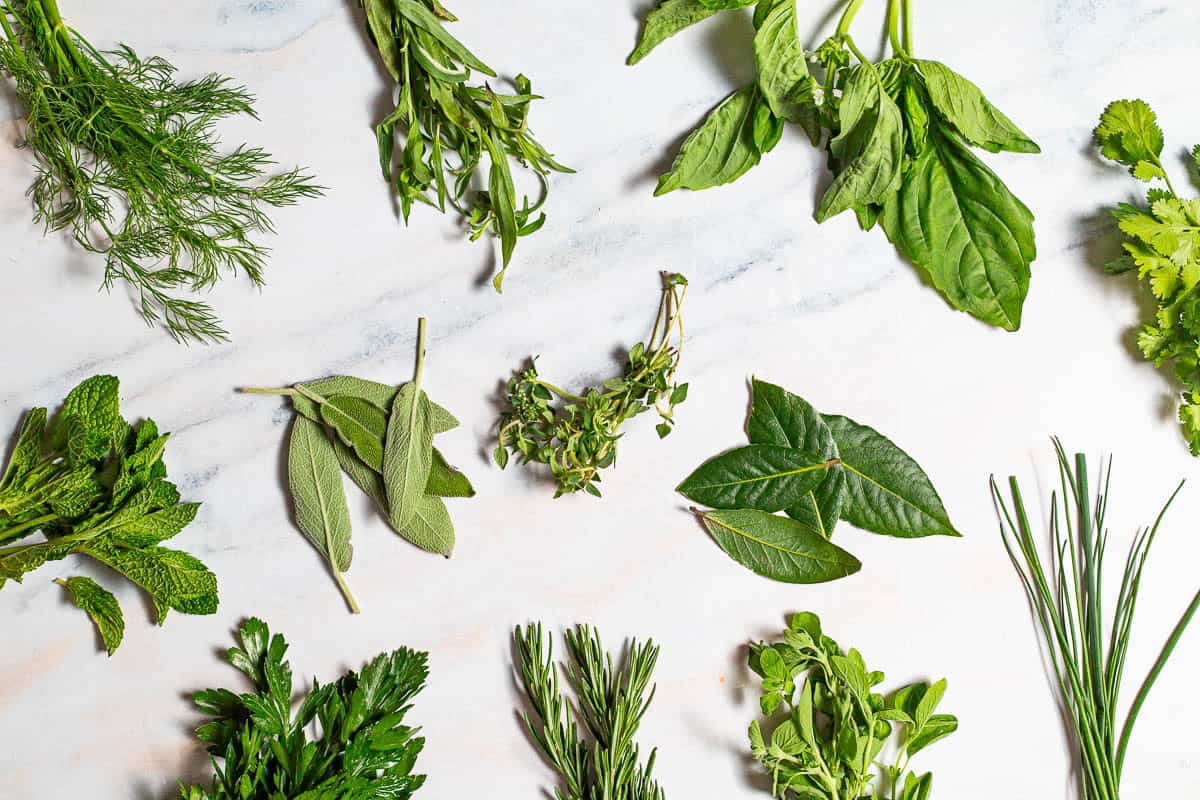
How to Swap Fresh Herbs for Dried Herbs
The best rule of thumb for swapping fresh herbs with dried is to use 1/3 of the amount.
- 1 tablespoon fresh herbs = 1 teaspoon dried herbs
It’s not a perfect equation–you can’t match the potency of dried herbs with fresh, and you can’t match the refreshing quality of fresh herbs with dried. But often life isn’t perfect, and you have what you have on-hand and make it work. That’s very much the Mediterranean way too!
Herby Delicious Recipes
Browse all Mediterranean recipes.
Visit Our Shop.
Mediterranean Diet Starter Kit
Stock your pantry with the essentials to eat the Mediterranean way, including Greek olive oil, 7 spices, and tahini.
